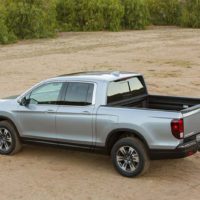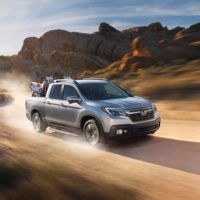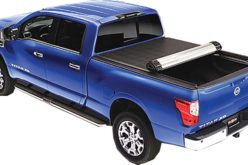Road Test: 2017 Honda Ridgeline Touring


When the original Honda Ridgeline first hit the market in the 2006 model year, it was clear this was a truck that was a little different than basically everything else that was currently being offered. It featured full-time AWD rather than selectable 4WD, had a funky integrated cargo box design, and boasted a unibody platform and fully independent suspension all of which basically go against traditional truck features. Due to this the truck picked up a loyal following, as it drove more like a car or SUV and was ideal for urban environments, until production was halted back in 2014. Now here in 2017, the Ridgeline is back and carries many of the same car like characteristics that made the first generation so successful but this time with a more rugged, truck-like appearance to go along with it.
The Ridgeline now offers bold new looks that, although is reminiscent of its predecessor, has swung more towards the traditional truck-like appearance… albeit in Honda’s own way. The rear of the truck offers a sharp new appearance that looks very similar to other truck offerings, but it’s the front end that garnered some mixed reactions. If you were to look at the Ridgeline from dead centre right in front, you would swear you were looking a Honda Pilot SUV as there appears to be very little to distinguish the two. When coupled with the traditional truck-like rear end is where I believe these mixed reactions have come from.

Under the hood of the Ridgeline is a 3.5L SOHC V6 engine paired to a 6-speed auto that produces 280 horsepower and 262 lb-ft of torque. As previously mentioned, power is put to the ground via a full-time all-wheel-drive system with multiple terrain settings instead of traditional 4×4. Along with the independent suspension, this provided a pretty sound driving experience when taken on a curvy rural highway or driving through the city which is not something to be said for every pickup.
Something that must be brought up when talking about the Ridgeline is the innovative cargo-carrying methods Honda have continued on from the first-gen that really offer you something no other pickup on the market does. For starters, the rear of the truck bed features something of a trap door that exposes a lockable in-bed trunk that is surprisingly deep and gives you a spot to look up valuables that you don’t want cluttering up the cabin. The truck bed can be accessed from its two-way tailgate that drops down traditionally or swings open offering you immediate access to the rear. Finally, when the rear seats are folded up an ample amount of storage space is found that is surely big enough for a few sets of golf clubs or other gear.
The rest of the interior is well-laid out and refined but does nothing that will truly amaze you and in terms of space, I found the seating position and front seats to be rather comfortable but also found that it was somewhat lacking in headroom.
The new Ridgeline has entered a newly ultra-competitive segment that features the (somewhat) recently re-birthed GM Colorado/Canyon twins, Toyota’s Tacoma, Nissan’s Frontier, and Ford’s Ranger on its way back in the near future. Given that the Ridgeline is truly unlike any of these and offers the driving experience of a car or SUV with the capabilities of a pickup, it should garner some attention to those looking for a vehicle of that ilk, especially if you live near a big city.



















